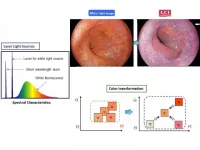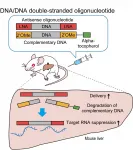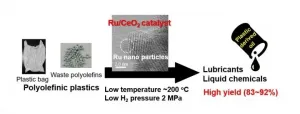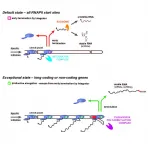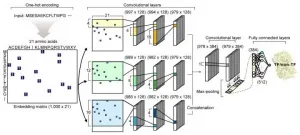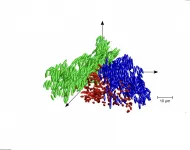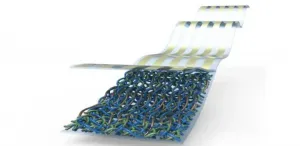(Press-News.org) LA JOLLA--(January 5, 2021) Lithium is considered the gold standard for treating bipolar disorder (BD), but nearly 70 percent of people with BD don't respond to it. This leaves them at risk for debilitating, potentially life-threatening mood swings. Researchers at the Salk Institute have found that the culprit may lie in gene activity--or lack of it.
A new study led by Salk Professor and President Rusty Gage, which published in the journal Molecular Psychiatry on January 4, 2021, shows that decreased activation of a gene called LEF1 disrupts ordinary neuronal function and promotes hyperexcitability in brain cells--a hallmark of BD. The work could result in a new drug target for BD as well as a biomarker for lithium nonresponsiveness.
"Only one-third of patients respond to lithium with disappearance of the symptoms," says Renata Santos, co-first author on the study and a Salk research collaborator. "We were interested in the molecular mechanisms behind lithium resistance, what was blocking lithium treatment in nonresponders. We found that LEF1 was deficient in neurons derived from nonresponders. We were excited to see that it was possible to increase LEF1 and its dependent genes, making it a new target for therapeutic intervention in BD."
The study builds on the team's earlier findings, which reported that the neurons of people with BD who don't respond to lithium are larger, fire differently (are more easily stimulated, or hyperexcitable), and have increased potassium flow.
Subjects in the team's current study included lithium responders, nonresponders and people without BD (controls). Using stem-cell methods, the researchers grew neurons from the subjects' blood cells and compared the genetic disposition and behavior of the neurons for the three groups.
They looked at many genes across the board, but LEF1 stood out as one of the most different in nonresponders. Normally, LEF1 plays a decisive role in neuronal function by pairing with another protein called beta-catenin. The pairing typically activates other genes that regulate the level of activity in the neuron. In control or responding neurons, lithium enables beta-catenin to pair with LEF1. But in nonresponders, lithium is ineffective because LEF1 levels are too low for the pairing to occur, so there's no regulation of cell activity.
When the team administered valproic acid, a treatment often used for nonresponders, measurements showed increased levels of LEF1 and activation of the other relevant genes. And when the team silenced the LEF1 gene in control neurons, they found that the related genes were not activated. Together, these results indicate the critical role LEF1 plays in controlling neuronal hyperexcitability.
"When we silenced the LEF1 gene, the neurons became hyperexcitable," says Shani Stern, co-first author on the study and a Salk visiting scientist. "And when we used valproic acid, expression of LEF1 increased, and we lowered the hyperexcitability. That shows there is a causative relationship, and that's why we think LEF1 may be a possible target for drug therapy."
LEF1 may also help researchers develop a screening test for responsiveness. Currently, clinicians can only determine whether a patient is responsive to lithium by administering a complete course of treatment, which could take a year. Now, subdued activity of LEF1 may be an indicator that a patient won't respond to lithium, enabling a faster and more efficient way to approach therapy.
Team members already contemplating next steps. These include looking at other cell types, such as astrocytes and GABAergic neurons, to understand the bipolar neural network as a whole; identifying other genes that could be beneficial for nonresponders; and finding other drugs that can activate LEF1.
"LEF1 works in various ways in different parts of the body, so you can't just turn it on everywhere," says Carol Marchetto, co-corresponding author and Salk research collaborator. "You want to be more specific, either activating LEF1 on a targeted basis or activating downstream genes that are relevant for lithium nonresponsiveness."
INFORMATION:
Other authors on the study were Sara B. Linker, Ana P. D. Mendes, Lynne Randolph-Moore, Vipula Racha, Yeni Kim, Maxim N. Shokhirev, and Galina Erikson of Salk; John R. Kelsoe of the University of California San Diego; Anne G. Bang of the Sanford Burnham Prebys Medical Discovery Institute; and M. Alda of Dalhousie University.
The work was funded by the National Institutes of Health, the Chapman Foundation and the Helmsley Charitable Trust, the National Cancer Institute, the National Cooperative Reprogrammed Cell Research Groups, the JPB Foundation, Annette C. Merle-Smith, the Robert and Mary Jane Engman Foundation, and the Zuckerman STEM leadership program funding.
About the Salk Institute for Biological Studies:
Every cure has a starting point. The Salk Institute embodies Jonas Salk's mission to dare to make dreams into reality. Its internationally renowned and award-winning scientists explore the very foundations of life, seeking new understandings in neuroscience, genetics, immunology, plant biology and more. The Institute is an independent nonprofit organization and architectural landmark: small by choice, intimate by nature and fearless in the face of any challenge. Be it cancer or Alzheimer's, aging or diabetes, Salk is where cures begin. Learn more at: salk.edu.
Researchers from Tokyo Medical and Dental University (TMDU) describe an endoscopic modality for detecting upper gastrointestinal tract neoplasms by Linked Color Imaging that innovatively mixes light of different wavelengths to better depict mucosal changes
Tokyo, Japan - Recently there have been significant advances on several fronts in the ongoing war against cancer of the alimentary tract. Now, Japanese researchers report the development of another weapon: Linked Color Imaging (LCI), a novel endoscopic technique that improves detection of cancer by viewing the upper digestive tract mucosa under illumination that combines specific wavelengths of light to intensify subtle color variations indicative of neoplastic change.
Upper gastrointestinal (GI) endoscopy ...
Researchers from Tokyo Medical and Dental University (TMDU) and Ionis Pharmaceuticals, USA, report a modification wherein replacing the RNA strand of a heteroduplex oligonucleotide with DNA may enhance the efficacy of antisense oligonucleotide-based drugs
Tokyo, Japan - Antisense oligonucleotides (ASO) hold great promise for pharmacotherapy. Now, researchers at Tokyo Medical and Dental University (TMDU) and Ionis Pharmaceuticals, advancing their earlier work on a heteroduplex oligonucleotide (HDO) model, have demonstrated augmentation of ASO-based ...
For the first time, researchers have used a novel catalyst process to recycle a type of plastic found in everything from grocery bags and food packaging to toys and electronics into liquid fuels and wax.
The team published their results on Dec. 10 in Applied Catalysis B: Environmental.
"Plastics are essential materials for our life because they bring safety and hygiene to our society," said paper co-authors Masazumi Tamura, associate professor in the Research Center for Artificial Photosynthesis in the Advanced Research Institute for Natural Science and Technology in Osaka City University, and Keiichi Tomishige, professor in the Graduate School of Engineering in Tohoku University. "However, the growth of the global ...
An imbalance of the body's oxygen producing free radicals and its antioxidant cells could be the reason why gum disease and chronic kidney disease affect each other, a new study led by the University of Birmingham has found.
Periodontitis - or gum disease - is a common, inflammatory disease which causes bleeding gums, wobbly or drifting teeth and can eventually result in tooth loss.
Previous studies have shown a link between the severe oral inflammation caused by gum disease and chronic kidney disease (CKD) which demonstrated that those with worse inflammation of the gums have worse kidney function.
Previous research also showed that patients with CKD and periodontitis experience ...
Practicing gratitude and looking to the future will help safeguard our mental wellbeing during Covid-19 lockdowns, a new study in the Journal of Positive Psychology reports.
In the first study of its kind, researchers from the University of Surrey investigated the effectiveness of three psychological interventions -- nostalgia, a sentimentality for the past; gratitude, recognising the good things currently in our life; and best possible self, thinking about positive elements of the future -- and how they each affect wellbeing during lockdowns.
Personal characteristics such as emotion regulation (the ability to respond ...
In a joint collaboration, Danish and German researchers have characterized a cellular activity that protects our cells from potentially toxic by-products of gene expression. This activity is central for the ability of multicellular organisms to uphold a robust evolutionary 'reservoir' of gene products.
Manufacturing processes need quality control systems in order to ensure proper assembly of functional products. Moreover, space-consuming, and perhaps even toxic, by-products of such processes need to be properly discarded or recycled by efficient waste handling systems.
By analogy, transcription of our genome is an imperfect process that produces large quantities of non-functional and potentially harmful transcripts both from within and ...
Researchers at the Francis Crick Institute and the University of Western Australia have developed a new imaging method to see where antibiotics have reached bacteria within tissues. The method could be used to help develop more effective antibiotic treatments, reducing the risk of antibiotic resistance.
During bacterial infections like tuberculosis, bacteria enter human cells, which poses a challenge for treatment, as antibiotics must reach and enter all infected cells in order to be effective. If researchers could select for or develop more effective antibiotics based on where they reach, this may reduce the length of treatment ...
A joint research team from KAIST and UCSD has developed a deep neural network named DeepTFactor that predicts transcription factors from protein sequences. DeepTFactor will serve as a useful tool for understanding the regulatory systems of organisms, accelerating the use of deep learning for solving biological problems.
A transcription factor is a protein that specifically binds to DNA sequences to control the transcription initiation. Analyzing transcriptional regulation enables the understanding of how organisms control gene expression in response to genetic or environmental changes. In this regard, finding the transcription factor of an organism is the first step in the analysis ...
While glass is a truly ubiquitous material that we use on a daily basis, it also represents a major scientific conundrum. Contrary to what one might expect, the true nature of glass remains something of a mystery, with scientific inquiry into its chemical and physical properties still underway. In chemistry and physics, the term glass itself is a mutable concept: It includes the substance we know as window glass, but it may also refer to a range of other materials with properties that can be explained by reference to glass-like behaviour, including, for instance, ...
Sunlight offers a potential solution in the search for an energy source that does not harm the planet, but this depends on finding a way to efficiently turn electromagnetic energy into electricity. Researchers from KAUST have shown how a known herbicide can improve this conversion in organic devices.
While solar cells have traditionally been made from inorganic materials such as silicon, organic materials are starting to break through as an alternative because they are light, flexible and relatively inexpensive to make, even offering the possibility for ...

